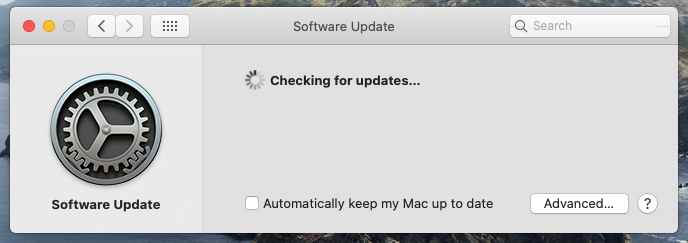Question or issue on macOS:
Could anybody post a working solution for setting ANDROID_HOME via the terminal?
MacOS Catalina for Windows Pc & Mac: Free Download (2021. This Android Emulator is designed to bring you both worlds - a complete fusion of. To run the emulator in Android Studio, make sure you're using Android Studio 4.1 or higher with version 30.0.10 or higher of the Android Emulator, then follow these steps: Click File Settings Tools Emulator (or Android Studio Preferences Tools Emulator on macOS ), then select Launch in a tool window and click OK.
My path to the Android-SDK is /Applications/ADT/sdk.
How to solve this problem?
Solution no. 1:
Where the Android-SDK is installed depends on how you installed it.
If you downloaded the SDK through their website and then dragged/dropped the Application to your Applications folder, it’s most likely here:
/Applications/ADT/sdk(as it is in your case).If you installed the SDK using Homebrew (
brew cask install android-sdk), then it’s located here:/usr/local/Caskroom/android-sdk/{YOUR_SDK_VERSION_NUMBER}If the SDK was installed automatically as part of Android Studio then it’s located here:
/Users/{YOUR_USER_NAME}/Library/Android/sdk
Once you know the location, open a terminal window and enter the following (changing out the path to the SDK to be however you installed it):
Once you have this set, you need to add this to the PATH environment variable:
Lastly apply these changes by re-sourcing .bash_profile:
source ~/.bash_profile
- Type – echo $ANDROID_HOME to check if the home is set.
echo $ANDROID_HOME
Solution no. 2:
In Terminal:
Add lines:
Check it worked:
Solution no. 3:
Adding the following to my .bash_profile worked for me:
Solution no. 4:

quoting @user2993582’s answer
The ‘bin’ part has changed and it should be
Solution no. 5:
I am having MAC OS X(Sierra) 10.12.2.
I set ANDROID_HOME to work on React Native(for Android apps) by following the following steps.
- Open Terminal (press Command+R, type Terminal, Hit ENTER).
Add the following 3 lines to ~/.bash_profile.
Finally execute the below command (or RESTART the system to reflect the changes made).
source ~/.bash_profile
That’s it.
Solution no. 6:
Could anybody post a working solution for doing this in the terminal?
ANDROID_HOME is usually a directory like .android. Its where things like the Debug Key will be stored.
You can automate it for your login. Just add it to your .bash_profile (below is from my OS X 10.8.5 machine):
According to David Turner on the NDK Mailing List, both ANDROID_NDK_ROOT and ANDROID_SDK_ROOT need to be set because other tools depend on those values (see Recommended NDK Directory?).
After modifying ~/.bash_profile, then perform the following (or logoff and back on):
Snes Emulator Mac Os
Solution no. 7:
To set ANDROID_HOME, variable, you need to know how you installed android dev setup.
If you don’t know you can check if the following paths exist in your machine. Add the following to .bashrc, .zshrc, or .profile depending on what you use
If you installed with homebrew,
Check if this path exists:
If you installed android studio following the website,
Finally add it to path:
If you’re too lazy to open an editor do this:
Solution no. 8:
I’m using React Native with Catalina mac os and zsh shell
1- touch ~/.zshrc

2- open ~/.zshrc
3- according to React Native android setup copy and past
to the opened text file then save and close the file.
4- run source ~/.zshrc
and make sure to restart your terminal.
5- run adb you will get something like
Android Debug Bridge version 1.0.41 Version 30.0.0-6374843
thanks for this documented
Solution no. 9:
People, note that if you will use ~/.bash_profile then it will edit not your user’s bash profile, but global. Instead go to your users directory (/Users/username) and edit it directly:
And insert following two lines with respect to your Username and SDK directory
Solution no. 10:
Setup ANDROID_HOME , JAVA_HOME enviromental variable on Mac OS X
Add In .bash_profile file
For Test



